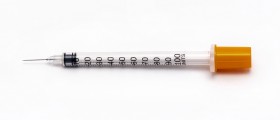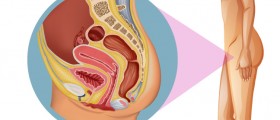
A woman can experience various side effects during hormone therapy and those can be easily divided into two groups.
The common and less serious side effects are headaches, breast pain, a nauseous feeling and these are usually described as annoying. It is still largely unknown if these side effects are caused by the estrogen component and if they persist for some significant amount of time during therapy.
The doctor usually alters the estrogen part or the progesterone part of the therapy, depending on the individual. Menopause and aging is associated with weight gain so there’s no possibility of gained weight being associated with prescribed hormone therapies.
The more serious side effects of hormone therapy are much more complex than the common, annoying ones. Hormone therapy may increase the risk of deep vein thrombosis and pulmonary embolus up to two or even three times.
Women who use only estrogen during the hormone therapy are risking uterine cancer, but at the same time it is a rare occasion that a doctor prescribes it without progestin. If for some reason a female patient cannot take progesterone, annual cancer checks take place during the estrogen therapy. Those who have had a hysterectomy have no risk of uterine cancer.
Hormone therapy also slightly raises the potential risk of breast cancer but that is usually associated only with patients who use the hormone therapy for five or more years. Hormone Therapy is very efficient in lowering the levels of bad cholesterol and raising the levels of good cholesterol in the blood, but at the same time, it increases the risk of heart attacks and various other heart diseases and conditions.
Abnormal vaginal bleeding can also be caused by hormone therapy, and by abnormal it means that they occur when they are not expected or that they are excessively heavy or long in duration, but that should not happen after the first year of the hormone therapy has passed. If abnormal bleeding occurs, a sample of the uterus’ lining must be taken and evaluated afterward. If there are no harmful values found, the doctor usually adjusts the doses of hormone therapy to minimize the bleeding.
One of the potential risks that comes with the hormone therapy is a stroke. All the other harmful side effects of the therapy is the reason why many women with no major menopause symptoms largely avoid this type of therapy. What comes as a surprise is that the potential risks associated with other types of hormone therapy are totally unknown.













-Why-Some-Women-Take-This-Type-Of-Progesterone-During-Early-Pregnancy_f_280x120.jpg)



Your thoughts on this
Loading...